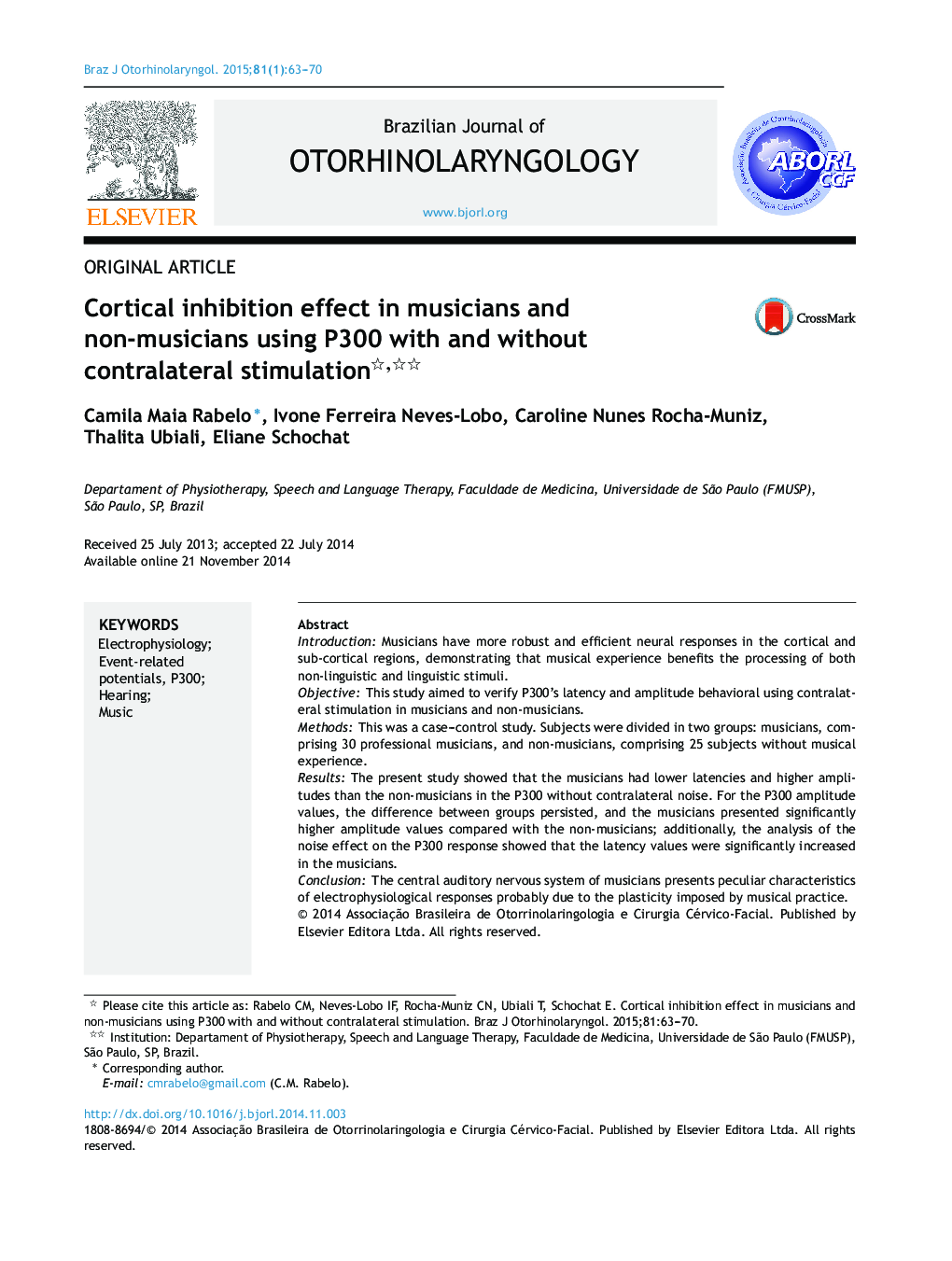| Article ID | Journal | Published Year | Pages | File Type |
|---|---|---|---|---|
| 4106285 | Brazilian Journal of Otorhinolaryngology | 2015 | 8 Pages |
IntroductionMusicians have more robust and efficient neural responses in the cortical and sub-cortical regions, demonstrating that musical experience benefits the processing of both non-linguistic and linguistic stimuli.ObjectiveThis study aimed to verify P300's latency and amplitude behavioral using contralateral stimulation in musicians and non-musicians.MethodsThis was a case–control study. Subjects were divided in two groups: musicians, comprising 30 professional musicians, and non-musicians, comprising 25 subjects without musical experience.ResultsThe present study showed that the musicians had lower latencies and higher amplitudes than the non-musicians in the P300 without contralateral noise. For the P300 amplitude values, the difference between groups persisted, and the musicians presented significantly higher amplitude values compared with the non-musicians; additionally, the analysis of the noise effect on the P300 response showed that the latency values were significantly increased in the musicians.ConclusionThe central auditory nervous system of musicians presents peculiar characteristics of electrophysiological responses probably due to the plasticity imposed by musical practice.
ResumoIntroduçãoOs músicos possuem respostas neurais mais robustas e eficientes em regiões corticais, mostrando que a experiência musical beneficia o processamento de estímulos linguísticos e não linguísticos.ObjetivoVerificar como a latência e a amplitude do P300 se comporta usando estimulação contralateral, em músicos e não músicos.MétodoEstudo de caso-controle. Os indivíduos foram divididos em dois grupos: GM (grupo de músicos) com 30 músicos profissionais e GNM (grupo de não músicos) com 25 indivíduos sem experiência musical.ResultadosOs resultados mostraram que: GM teve latências menores e amplitudes maiores do que a GNM no P300 sem ruído contralateral. Para os valores de amplitude do P300, a diferença entre os grupos se manteve, e o GM apresentou valores de amplitude significativamente maiores em comparação com o GNM; e a análise do efeito do ruído sobre a resposta P300 mostrou que os valores de latência foram significativamente maiores no GM.ConclusãoConcluímos que o sistema nervoso auditivo central de músicos apresenta características peculiares de respostas eletrofisiológicas provavelmente devido à plasticidade imposta pela prática musical.
